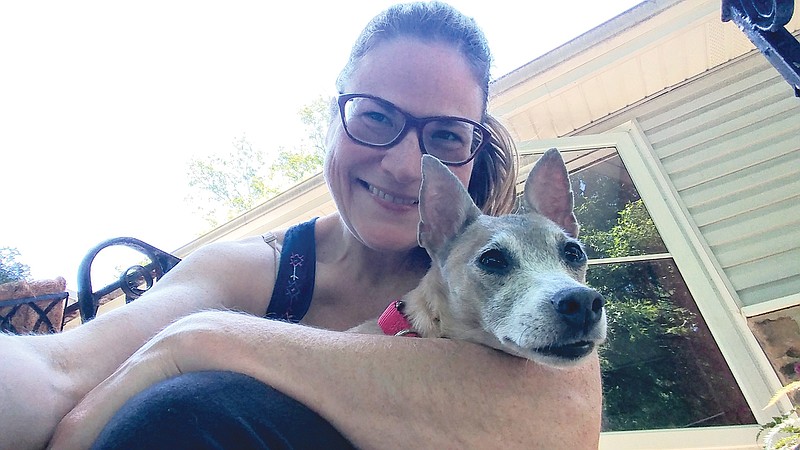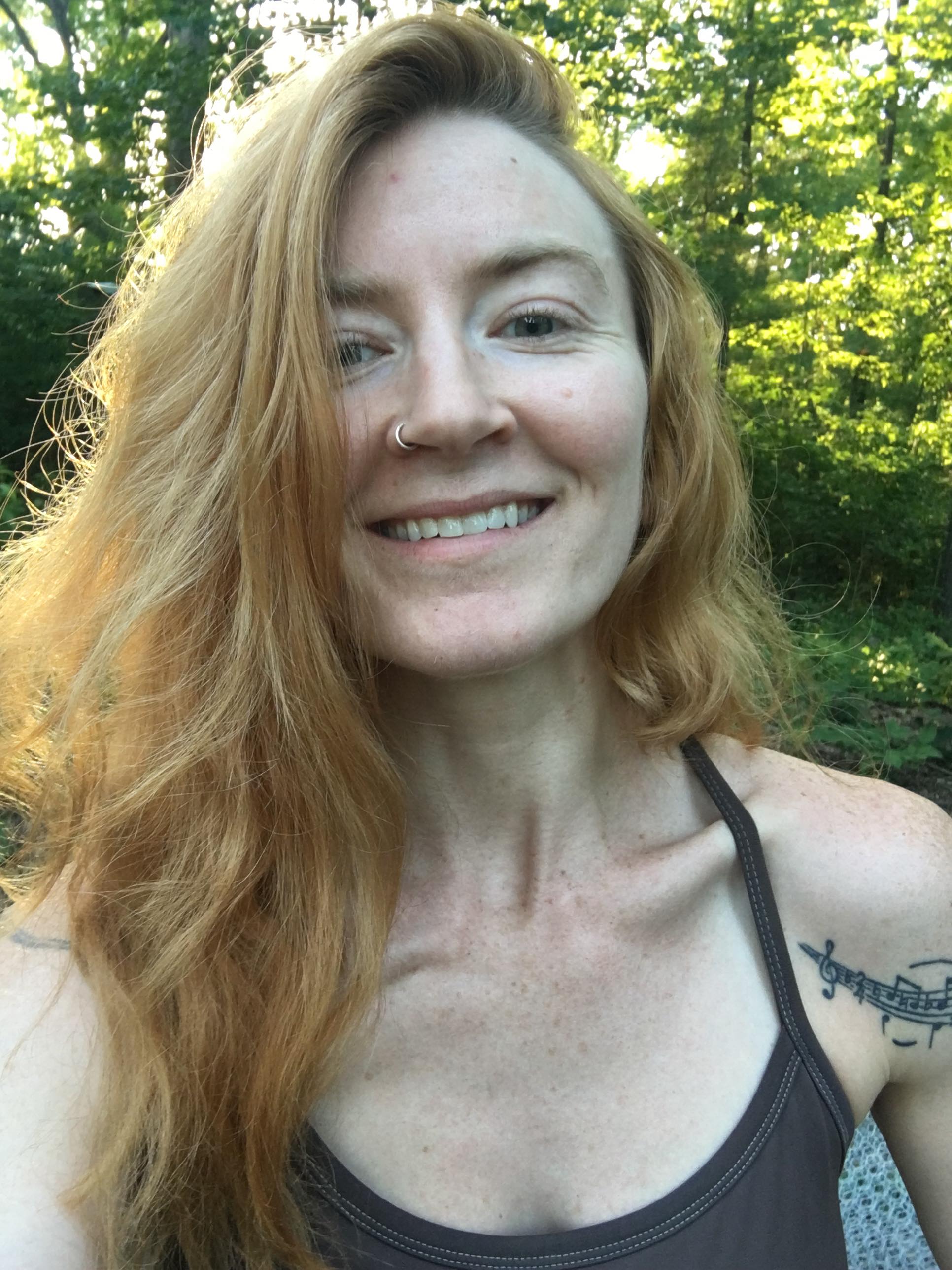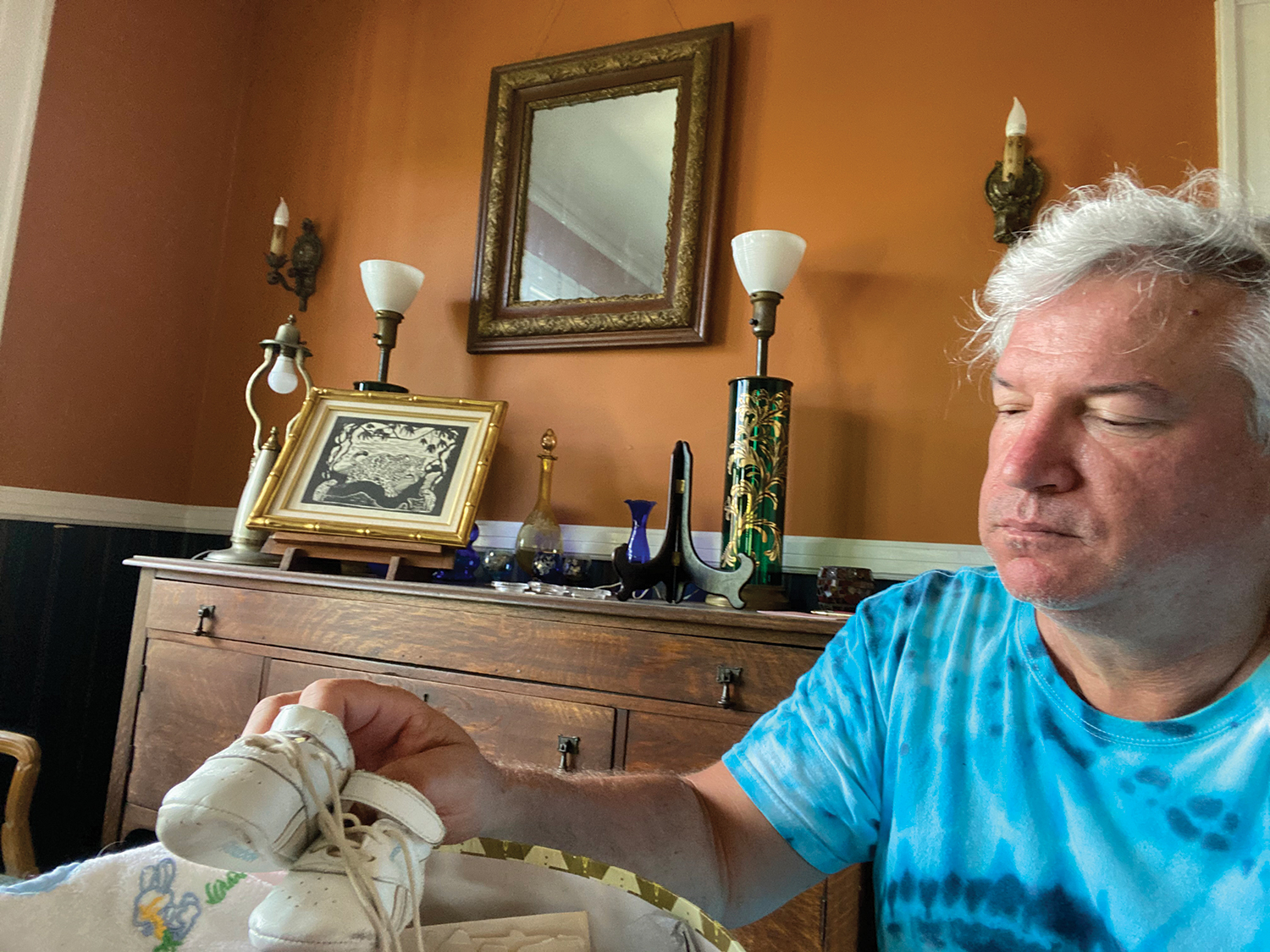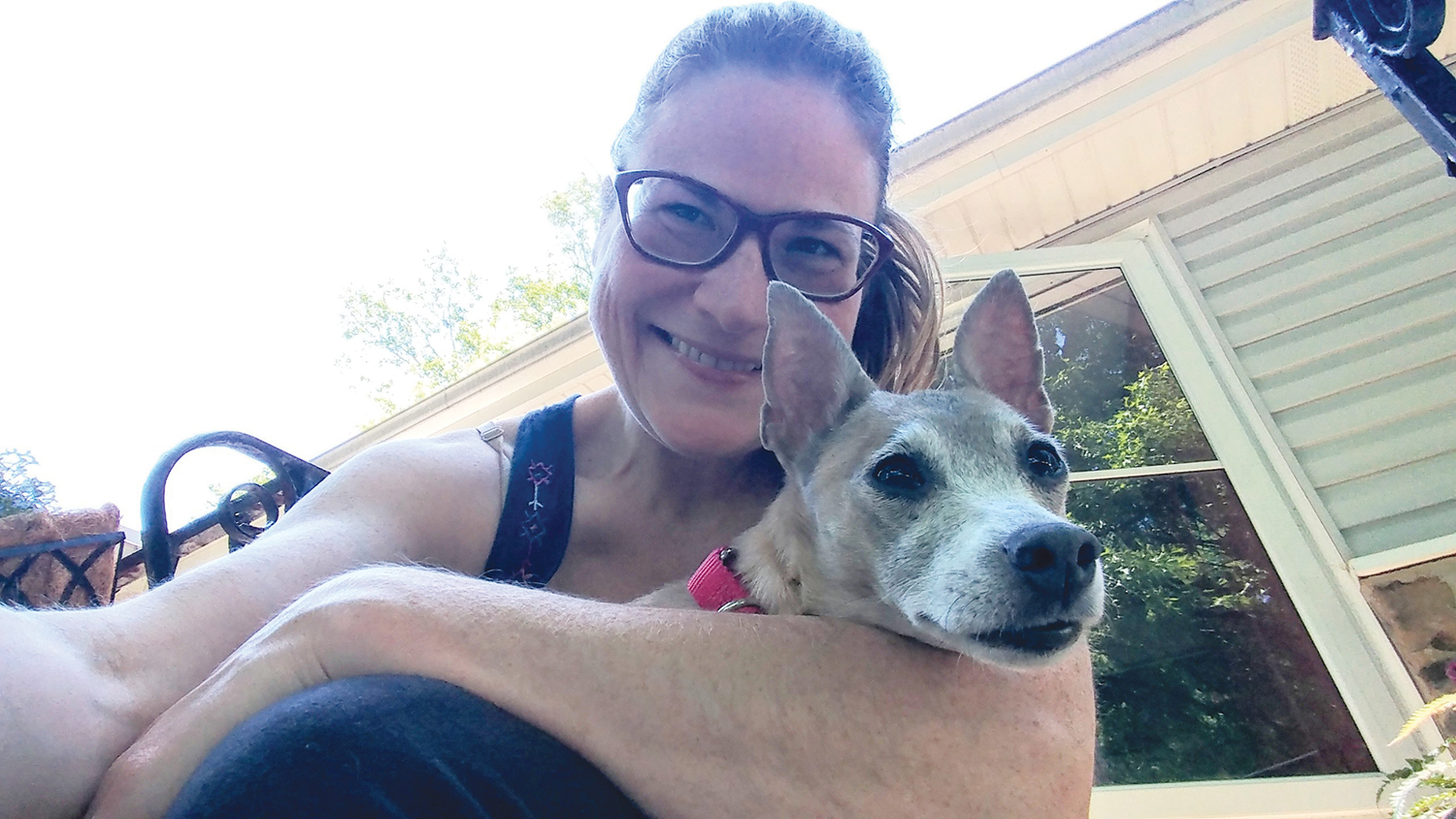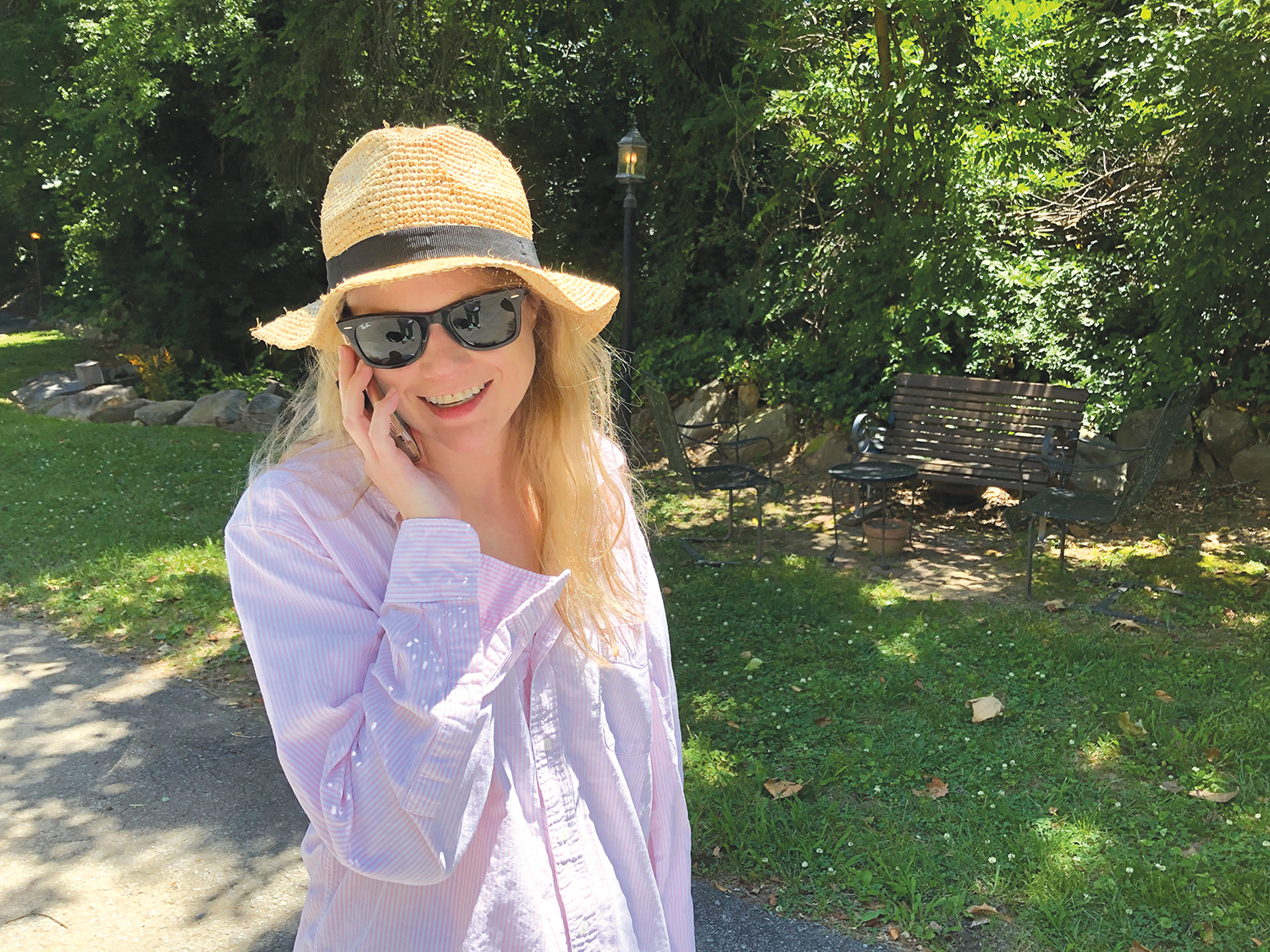"What are some of the things you've done while in quarantine? Things you've done out of pure boredom. Or just because you actually have the time now?"
That April 25 Facebook post by a friend prompted a flurry of responses. After reading each one with interest, I added my own: Fostered a dog - soon to be 2. Tried a plant-based diet. Bought a bike. Thought about all the home projects I told myself I'd get done in quarantine.
Even amid the extra quality time with loved ones and cumulative hours for self-reflection and improvement the global slowdown has gifted us, there's been plenty of time left over for all those back-burner projects in the backs of our minds.
Here, Chatter writers share some of the more interesting or impactful ways they've passed all that time.
Sunny Montgomery
For some time, I've wanted to try the "no poo" hygiene method, which - stay with me - isn't as strange as it sounds.
"No poo" refers to the trend of forgoing any and all shampoo. Yes, even that expensive stuff labeled sulfate- or paraben-free.
The idea is that the detergent in these products strips our heads of essentials oils, which are designed to protect our strands. And besides, proponents of the trend remind us, hair-washing, as we know it, is only about a century old. Before the billion-dollar shampoo industry was born, people used dry substances such as wood ash to clean their scalps.
There is a range of ways to participate in "no poo." Some prefer washing their scalps with baking soda followed by apple cider vinegar, others avoid getting their head wet altogether. I was most interested in the latter but have always hesitated, worrying about the social and professional consequences of having unwashed hair.
If I could just push through that first week, though - when, according to the internet, my hair would likely feel and look dirty - I would presumably be rewarded with soft, voluminous, healthy locks. While there are no scientific studies to support these claims, anecdotal evidence abounds in the form of online videos, blogs and forums.
So in early April, I quit washing my hair. What better time to finally experiment than amid a pandemic, while we're all stuck at home, I reasoned?
The first week went as expected. My hair looked unwashed. I kept it in braids covered with scarves. Every night, I brushed it, hoping to help distribute some of the oil through my strands.
By the end of week two, my thick, frizz-prone hair was smoother than it'd ever been without effort. My roots, no longer dull and oily, took on a texture similar to if I had used a dab of extra-body mousse - and with the same results.
I felt as if I had finally bucked the system. I was ecstatic.
Then, that following week, one of my chickens - the one I'd trained to perch on my head - pooped on me, effectively (and in more ways than one) cancelling my no-poo streak.
Some lifestyles are more suited to the no-poo method than others. Likewise, so are some hair types. Thick or curly hair tends to fare better without washing than fine or straight hair, explains one YouTuber.
But I suggest giving it a go regardless. My three weeks without shampoo changed my relationship with it forever. The effects of a good lather now last longer, and I comfortably suds up only about three times a month. My hair is softer and I no longer use conditioner.
For best results, however, avoid putting farm animals on your head.
Barry Courter
My parents and their parents had to deal with it, and now I have dealt with it, thanks in part to sheltering at home, which took away the decent excuse for not cleaning out closets and boxing things up.
But what's a loving parent to do with all of the stuff their kids saved, earned or created while they lived in your house growing up? The stick figure drawings with giant round heads and little bodies from preschool. The dozens of trophies (some earned and some given just for showing up). The old athletic uniforms. Dozens of ball caps. Once sentimental and now forgotten trinkets. And let's not forget all of the pictures and posters that hung on the walls over the years that held so much meaning at the time and now tell a story of a child growing from being interested in kittens and puppies to popular musicians of the time.
There are milestones and stories in those artifacts, but the reality is they take up space and might get looked at once a year. We save them as parents because they hold a deep meaning, and the idea of just throwing them in the trash seems unthinkable. At first. Eventually we realize that having the space is far more valuable.
Now that my and my wife Kelley's kids are grown and have their own homes, I've threatened to give them their stuff, naively thinking they'd be thrilled to have it.
Nope. Not only do they not want any of the furniture we've been saving for them over the decades, they don't want their trophies either.
During a recent visit, however, I gave our kids what remains of their stuff, and my youngest, who happens to be building a new home and is therefore not at all interested in adding clutter to a pristine canvas, was not excited about either looking through it or taking any of it with her.
She'd put off going through the stuff many times in the past, always finding an excuse or simply ignoring my pleas. But once she started going through things, she found herself enjoying the trip down memory lane, finding old notes from friends and teachers, and even her baby shoes. The real find, however, was more than $1,000 in savings bonds given to her by my parents on her birthday over the years.
So, we both came out ahead. Still, it is sad to see several large boxes of life's memories reduced to whatever can fit into a shoebox, with the rest going either into the trash can or to a thrift store.
Jennifer Bardoner
Before I brought home my first foster dog, a Golden Retriever named Red, I was riddled with nervous questions:
Would my dogs welcome her?
Would I be able to provide a structured, supportive and nurturing environment where she could thrive?
Did I have enough patience, attention and love for all three animals?
Could I actually walk three dogs at the same time?
What I learned is that those answers didn't all have to be resounding yeses.
My 7-pound Chihuahua, Pablo, terrorized Red to the point that she ran away - twice. I had to adopt a staggered walking schedule that had me plodding up and down the huge hill that leads to my house three times a day. When Pablo lashed out or Red tried to slip the leash, my immediate reaction was fear that sounded like anger, not a gentle coaxing.
Maybe I'm not cut out for this, I thought. But seeing Red come out of her shell in just the few days I cared for her washed it all away. Still, I knew she was not destined for our family. The schedule and tension were unsustainable, and as fate would have it, a girl I went to high school with had started the adoption process the very day I brought Red home.
When I picked up my second foster dog, all my questions came flooding back, and somewhere along the line a new one was added that I hadn't really anticipated: Could I let her go?
Clover, an 8-year-old Chihuahua mix, had been rescued from a van along with 25 other dogs. It left her with severe separation anxiety. She'd whine if she couldn't see you for even a second. And then she found her bark, a shriek that visibly annoyed anyone who heard it, except me.
Clover's neediness kicked my nurturing into high gear. She became my purpose, much to the disappointment of Pablo and and my pittie Scarjo, but they accepted her. She quickly became part of the family. But Clover's 10-pound frame (and, I think, charming underbite) meant she had a lot of suitors. Small dogs are easier to adopt out.
I agonized over what to do. Would this adopter be a better fit for her than that one - or us? Each time, I prayed, and each time, the adopter fizzled away.
As time went on, more questions swirled in my head and heart: Would she feel abandoned by me? Would changing homes derail all the progress we'd made? Could she bond with a new family?
After 42 days and a lot more prayers, I reluctantly let Clover go. She now lives with a retired couple who can dote on her non-stop and their small terrier.
A week after tearfully saying goodbye, I called to check on her. Clover had resumed barking whenever left alone, but she was currently snuggled on the couch with her new sister. And though I still felt a tear in my heart, I knew all my prayers and questions had been answered.
Emily Crisman
While I haven't experienced much free time in quarantine to develop new hobbies, I have developed new habits. Like going on daily walks and taking my multitasking skills to the next level.
As the stress of what seems like never-ending workdays and the uncertainty of everything in my life started to overwhelm me, I found comfort in using the little free time I had during the day to make at least one phone call unrelated to work during my daily walks. Before the pandemic, I always reserved my cellphone strictly for personal use to encourage myself to unplug from work. But now that I no longer have an office phone - or an office - to separate work and home life, I find myself texting for work at all hours of the day.
So to make connecting with friends feel less like work (and because it's hard to text while walking) I reverted to the old-fashioned phone call. There's something about hearing another person's voice on the line that makes them feel closer to you than seeing them on a computer or phone screen. It's a different sort of connection that feels stronger and more personal, and it has helped me to feel confident in my ties to others during a time when I feel so unsure about everything else. It also doesn't hurt that my best friend is a therapist.
With less structure to my days, I've realized that no matter how busy you are, it is possible - essential, actually - to carve out time for the things that are important to you, from connecting with the people you love to taking care of yourself by eating well and exercising. So for those of you who also feel like you're going insane, I encourage you to rediscover the pleasant diversion of a leisurely phone call that has no real purpose. I'm not a real chatty gal, but just a few minutes of hearing the voice of a person who cares about you can put a more positive spin on the rest of your day.
And don't feel bad about taking time for a shower!
